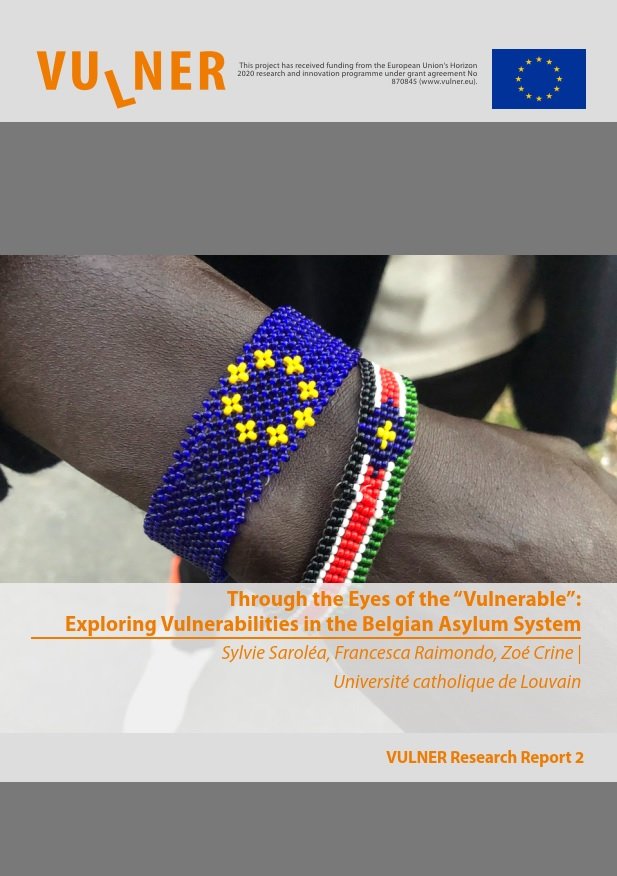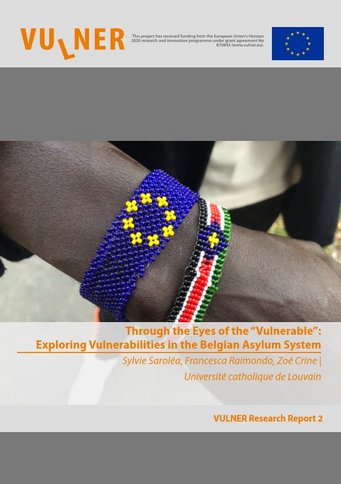Through the Eyes of the “Vulnerable”: Exploring Vulnerabilities in the Belgian Asylum System
Research report on the experiences of migrants seeking protection in Belgium - by Sylvie Saroléa, Francesca Raimondo, Zoé Crine
The VULNER research project’s objective is to reach a more profound understanding of the experiences of vulnerabilities of migrants applying for asylum and other humanitarian protection statuses, and how they could best be addressed. It therefore makes use of a twofold analysis, which confronts the study of existing legal and bureaucratic norms and practices that seek to assess and address vulnerabilities among migrants seeking protection, with migrants’ own experiences. Creating a framework to allow protection seekers to highlight their reality and experiences in their own words, and include the insights of associations and lawyers specialised in the asylum and migration fields, can shed greater light on how and to what extent an asylum procedure can accommodate those experiences.

To that end, the research fieldwork underlying this report on the asylum procedure in Belgium involved interviews with a) asylum seekers at seven reception centres and b) associations and lawyers specialised in asylum and immigration law (see the methodology section of this report). Those interviewed included 39 asylum seekers, five lawyers (three Dutch-speaking, two French-speaking), and 15 members of associations active in the field of asylum and migration who had participated in the study. In addition, seven others from a specific day centre (PSA centre in Brussels) who had not applied for asylum were also met.
This report on the fieldwork presents the following key findings:
• At the micro level, the report highlights the intersectionality of different types of vulnerabilities based on the personal accounts of protection seekers, in that their experiences related more generally to how certain situations impacted each of them during the asylum process and not simply to their distinct personalities. Conceiving vulnerability through an intersectional lens allowed us to better grasp how a combination of different factors (most commonly, gender, age and health) may increase the vulnerability that protection seekers experience at different points in the migratory path (country of origin, migratory road, country of arrival).
• At the meso level, the study underlines many types of the vulnerabilities the asylum seekers experience that the asylum process itself “favours”, and possibly also produces or maintains. These vulnerabilities arise for numerous reasons ranging from the length of the procedure to possible information and communication gaps between the protection seekers and the authorities (mostly resulting in feelings of loneliness and real disempowerment).
• At a macro level, the research reveals different tensions around the way vulnerability is approached and dealt with by the Belgian asylum system. Most notably, it questions the capacity of the asylum system to account for the different types of protection seekers’ vulnerabilities (and their particular needs) consistently and systematically, given that vulnerabilities are often assumed to crop up as a matter of “chance” or “coincidence”. It also highlights some dissent among the asylum bodies on the weight given to the vulnerability of protection seekers in designing the asylum process (as an exceptional procedural guarantee to be granted in specific cases or as a minimum standard/basis to apply to all protection seekers by default).
This report outlines the scope of several issues based on these findings, among them: issues relating to predictability, equality (before the law, in general, and the asylum procedure, in particular), and (overall) consistency.
Firstly, the consideration of vulnerability varies in a non-systematic way. Often its consideration depends on the context, the support provided to the protection seekers, and their understanding of the core tenets of the procedure (predictability). Secondly, for protection seekers, the lack of predictability undermines the principle of equality before the law (equality). Thirdly, despite the attempts of those responsible for identifying and addressing vulnerability on the ground, there is a general lack of consistency that prevents a real vulnerability policy from being implemented (consistency).
The researchers remain grateful to all those who crossed their paths during this study and agreed to share their stories, their fears, but also their dreams.
Download the full report here.
